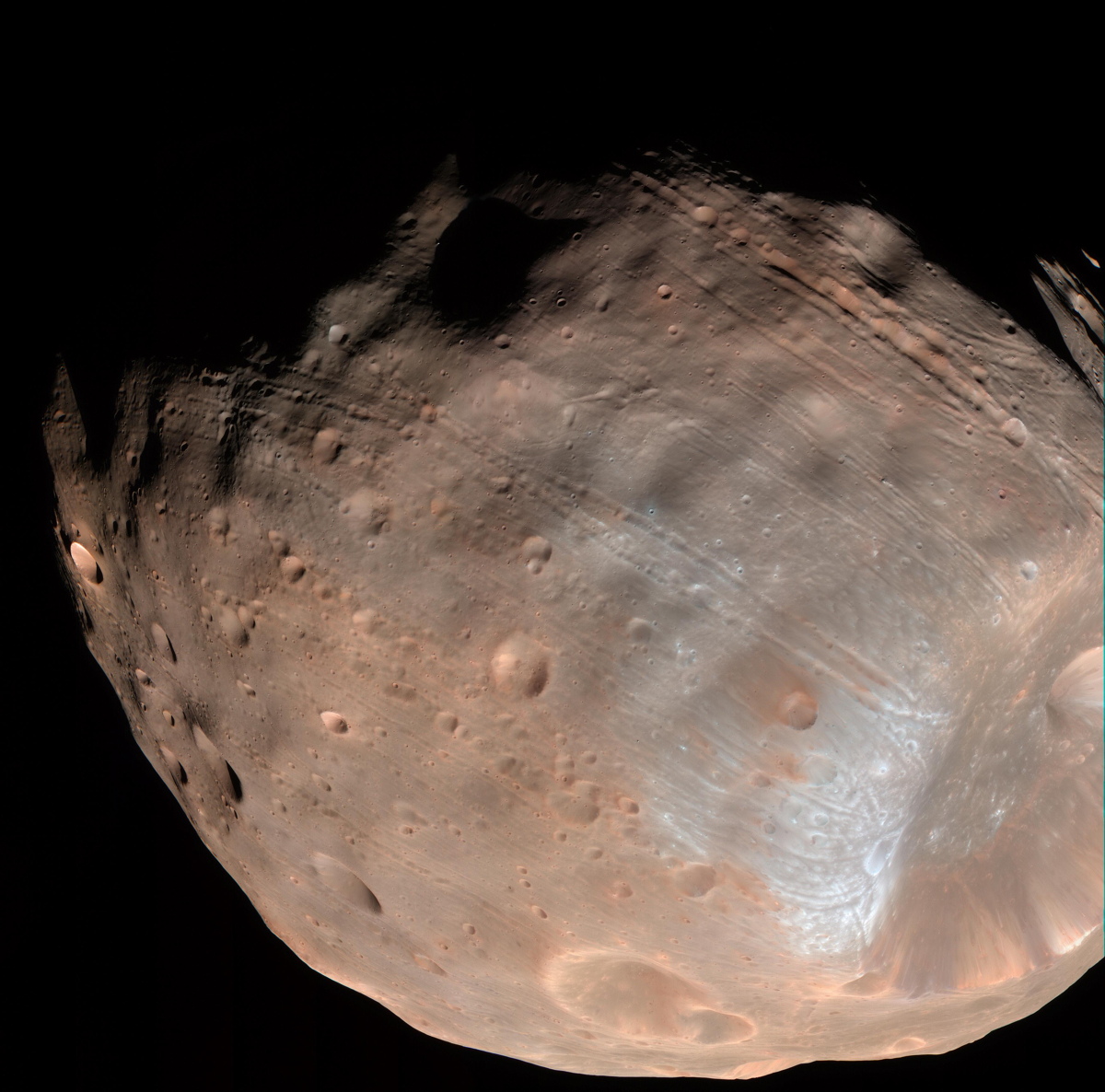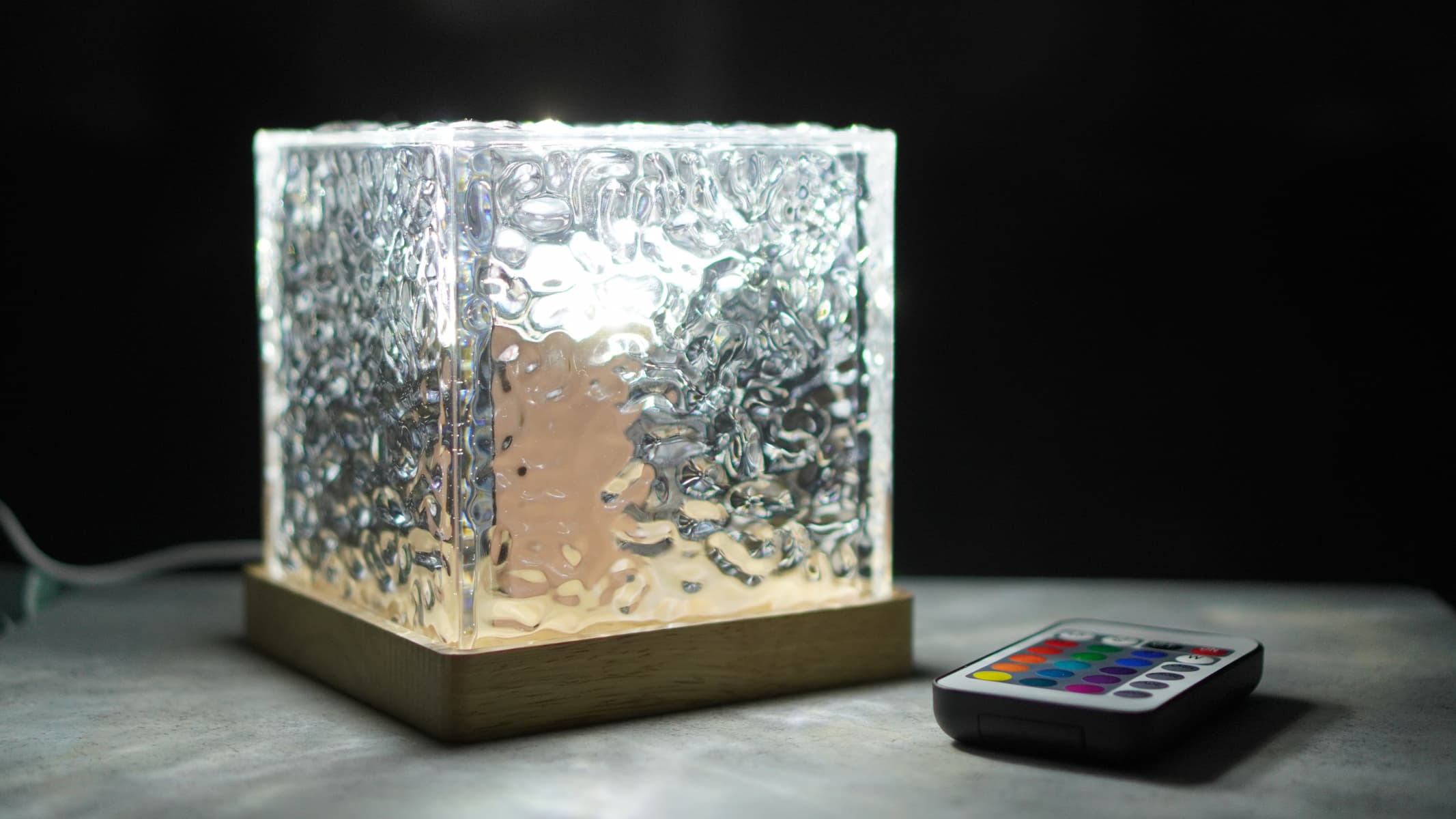'Stretch Marks' on Phobos Show Martian Moon Is Falling Apart

Long, thin "stretch marks" on the surface of Phobos are early signs that the Martian moon is falling apart, new research suggests.
Phobos is a tiny moon that is closer to Mars than any other moon in the solar system is to its planet. Over the course of every 100 years, the moon creeps about 6.6 feet (2 meters) closer to Mars. As the moon approaches, the effects of Mars' gravity strengthen, and research suggests that gravity should break the potato-shaped moon apart in 30 million to 50 million years.
"We think that Phobos has already started to fail, and the first sign of this failure is the production of these grooves," Terry Hurford, a research assistant at NASA's Goddard Space Flight Center in Maryland, who led the study, said in a statement. [Moons of Mars: Amazing Photos of Phobos and Deimos]
Researchers originally suspected that the grooves were created when a body hit Phobos and nearly tore the moon to pieces. But the grooves did not radiate from the crater left behind, called Stickney; rather, they came from a nearby area. Another explanation suggested that when material gets displaced off nearby Mars and hits Phobos' surface, it creates these grooves.
However, the new model Hurford and his colleagues created suggests the grooves are more like "stretch marks" on Phobos, an idea actually put forward in the 1970s and 1980s.
As Mars and Phobos tug on each other, researchers proposed, these forces produce stress fractures in the smaller body. The theory surfaced back when the Viking spacecraft first transmitted photos of Phobos — but at the time, scientists thought Phobos was a solid body, which would make the process less likely. Today, observations suggest Phobos is more of a loosely held rubble pile, with regolith (dust) of about 330 feet (100 meters) thick, NASA officials said in the statement.
Researchers also noted that some grooves appear younger than others, which fits in well with the stretch marks explanation. The work can also be applied to the future of Neptune's moon Triton, which is being pulled toward its own giant planet, as well as extrasolar planets, the scientists added.
Get the Space.com Newsletter
Breaking space news, the latest updates on rocket launches, skywatching events and more!
The research was presented Nov. 10 at the annual meeting of the Division for Planetary Sciences of the American Astronomical Society at National Harbor, Maryland.
Follow Elizabeth Howell @howellspace, or Space.com @Spacedotcom. We're also on Facebook and Google+. Original article on Space.com.
Join our Space Forums to keep talking space on the latest missions, night sky and more! And if you have a news tip, correction or comment, let us know at: community@space.com.

Elizabeth Howell (she/her), Ph.D., was a staff writer in the spaceflight channel between 2022 and 2024 specializing in Canadian space news. She was contributing writer for Space.com for 10 years from 2012 to 2024. Elizabeth's reporting includes multiple exclusives with the White House, leading world coverage about a lost-and-found space tomato on the International Space Station, witnessing five human spaceflight launches on two continents, flying parabolic, working inside a spacesuit, and participating in a simulated Mars mission. Her latest book, "Why Am I Taller?" (ECW Press, 2022) is co-written with astronaut Dave Williams.
